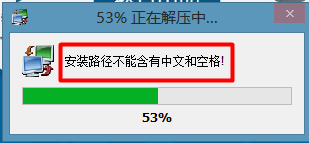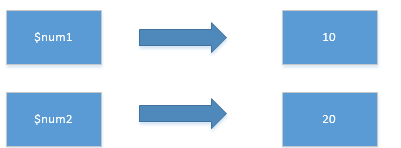本文共 4682 字,大约阅读时间需要 15 分钟。
1、PHP简介
1.1概述
PHP是Hypertext Preprocessor的缩写,(超文本预处理器)是一种在服务器端运行的开源的脚本语言
LAMP组合(Linux,Apache,MySQL,PHP),这四个产品都是公开源代码的产品

PHP是一门语言,用来做业务逻辑
apache为PHP提供了运行环境 linux为apache的运行提供了平台 mysql数据库用来存储数据
什么是wamp组合
windows+apache+mysql+php
1.2五个基本概念
1.静态页面和动态页面
静态页面:服务器不执行的页面,多通过网站设计软件来进行重新设计和更改。动态页面:服务器执行的页面,通过网页脚本与语言自动处理,自动更新的界面,比如贴吧,它就是通过网站服务器运行程序,自动处理信息,按照流程更新网页。
2.客户端和服务器端
浏览者这端是客户端服务器端:给浏览者提供服务

3.端口和端口号
端口号的范围:0-65535

4.BS架构和CS架构
BS:通过浏览器去访问服务器
b:browser(浏览器)s:sever(服务器)优点:1.只要有浏览器就可以访问2.开发低缺点:1.开发的代码都在服务器上
所有的web都是BS架构的
CS:通过客户端软件去访问服务器
c:client(客户端)s:server(服务器)优点:1.可以开发客户端和服务器端,这时候就可以实现负载的均衡缺点:1.必须要安装一个软件才能去访问2.开发成本高
例如:QQ,炒股软件
5.前台和后台
前台:浏览器看到的界面后台:管理员看到的界面
1.3PHP的优点
- 跨平台,既能在windows上运行,也能在linux上运行
- 源码开发:不会涉及到版权问题
- 语法简单:php入门简单
- 运行在服务器端,只需要在服务器部署环境就可以了
2、Web的介绍
2.1 web时代的变迁
Web1.0(信息共享)的主要特点在于用户单纯的获取信息Web2.0(信息共建)更注重用户的交互作用,用户既是网站内容的浏览者,也是网站内容的制造者Web3.0(信息传承)通过第三方信息平台对多家网站的信息进行整合,用户在互联网上拥有自己的数据,并能在不同的网站上使用
举例:
Web1.0:来到一个餐馆,老板给你上了一盘番茄炒蛋Web2.0:来到一个餐馆,你跟老板主动点了一份番茄炒蛋Web3.0:来到一个餐馆,老板见到你就问,老规矩,还要番茄炒饭?
2.2 Web服务原理
- 静态网站原理(浏览器-服务器)
- 动态网站原理(浏览器-服务器-数据库)
- 智能网站原理(浏览器-服务器{分析推荐}-数据库)
3、 搭建Web服务器
3.1 安装phpstudy
直接解压即可

3.2 目录结构

启动服务

3.3 访问服务器
在www目录下创建demo.php页面
访问服务器
访问规则:http://服务器ip地址/php页面比如:http://localhost/demo.phphttp://127.0.0.1/demo.php

3.4 常用的命令
补充DOS命令
切换盘符 盘符+冒号进入目录 cd 目录地址
Apache的命令
httped -v 查看apache版本号 versionhttped -t 检测运行环境 test

PHP的命令
php -v PHP版本号

3.5 互联网通讯原理
本质就是一台电脑访问另外一台电脑资源,寻址过程(IP地址,端口,域名,DNS)
在互联网上,IP地址是用来区分每台计算机的标识,但是IP不好记忆,我们将IP地址取一个名字,一个IP对应一个名字,这个名字就称为域名
访问过程

步骤:
1.客户端输入域名(网址),在最近的机房做DNS解析(Domain Name Server),DNS解析就是将域名转化为IP地址
2.通过IP地址访问服务器
3.6 DNS解析
目标:ip地址访问服务器不反便,通过域名来访问

hosts文件

测试

小结:
本机的hosts文件用来做DNS解析
4、 服务器配置
4.1 虚拟目录配置
1.更改虚拟目录
要更改虚拟目录的位置,需要到apache的配置文件中更改(conf/httpd.conf)
在phpstudy中,httpd.conf和vhost.conf都有配置虚拟目录的指令,并且两个配置文件中都有配置虚拟目录的指令,为了测试,我们注释掉vhost.conf的引入

更改虚拟目录

提醒:
项目上线之后,不可以显示目录结构(就是把目录权限注释掉)
权限的练习
例题一:
order allow,denyallow from all# 允许所有请求访问
例题二:
order allow,denyallow from alldeny from all#拒绝所有请求访问
例题三:
Order allow,denyDeny from allAllow from all# 允许所有请求访问
例题四:
Order deny, allow Allow from 192.168.101.50 Deny from 192.168 # 拒绝192.168开头,但除去(192.168.101.50)的IP的访问
例题五:
Order deny, allow Allow from 192.168.101.50 Deny from all # 只允许192.168.101.50访问
例题六:
Order allow,deny Allow from 192.168 Deny from 192.168.101.50 # 只允许192.168开头的,但要去除192.168.101.50 的IP访问
2.更改默认首页
在httpd.conf配置文件中

默认首页的查找顺序,从前往后
3.更改监听端口
在httped.conf配置文件中配置
通过Listen指令设置监听的端口
可以设置多个监听端口

访问:
http://域名:端口号/demo.php
补充:查看端口的占用情况
在命令行下使用netstat -ano查看

在结果中查找字符串

| 管道运算符
4.3 虚拟主机配置
需求:
输入www.baidu.com 打开web1的网站输入www.sina.com 打开web2的网站
配置过程:
要配置虚拟主机,需要在httpd.conf中引入虚拟主机的配置文件(vhost.conf)

vhosts.conf配置如下:
DocumentRoot "C:\web1" #指定虚拟目录路径 ServerName www.baidu.com # 虚拟目录绑定的域名 DirectoryIndex aa.php # 默认首页 Options -Indexes -FollowSymLinks +ExecCGI AllowOverride All Order allow,deny Allow from all Require all granted DocumentRoot "C:\web2" ServerName www.sina.com DirectoryIndex bb.php Options -Indexes -FollowSymLinks +ExecCGI AllowOverride All Order allow,deny Allow from all Require all granted
在host文件中做dns解析

访问结果


补充:站点,虚拟目录,虚拟主机的区别
站点:站点就是一个文件夹,用来保存与网站有关的所有素材
虚拟目录:站点+权限
虚拟主机:虚拟目录+域名
5、php语法入门
5.1 php是编译型语言


opcode是php语言里供zend引擎执行的一种中间代码,类似java中的字节码、或者python中的字节码对象pycodeobject.
5.2 php定界符
因为PHP是脚本语言,所以需要定界符
php的结束符隐藏了一个分号,最后一条语句没加分号时,结束符?>会自动加上。
分号表示一句话结束,结束符表示php文件结束。
1.标准风格(推荐使用)
例题
提醒,如果整个页面都是PHP代码,PHP结束符是可以省略的(推荐)
2.段标记风格(默认情况下不支持,需要在php配置文件中开启支持短标记)

把off改为on
例题:
httpd.conf是apache的配置文件
php.ini是php的配置文件
5.3 注释
单行注释: //和#
多行注释:/* */

5.4 php输出语句
echo:输出print:输出,输出成功返回1,0则不返回,报错(考试面试用,平时少用)print_r:输出数组var_dump():输出数据的详细信息,带有数据类型和数据长度
6、变量
变量的本质就是内存中的一段空间
6.1 变量的命名规则
1.变量必须是以 开 头 , 开头, 开头,符不是变量的一部分,仅表示后面的标识符是变量名
2.除了$以外,以字母,下划线开头,后面跟着数字,字母,下划线
3.变量名区分大小写, a a 和 aa和 aa和Aa是两个空间
下列变量是否合法
$a 合法$a1 合法$1a 不合法$_1a 合法
注意:PHP语句必须以分号结尾
6.2 可变变量
变量名可以变,将变量名存储在另外一个变量中
例题:
例题:
小结:
rand(1,10) 获取1-10的随机整数
6.3 变量
变量的传递有值传递和地址传递(引用传递)

//地址传递$num1=10; //将10付给$num1$num2=&$num1; //将$num1的地址付给$num2$num2=20; //更改$num2echo $num1; //20

小结:
1、参数的传递有两种,值传递和地址传递
2、&表示获取变量的地址
3、值传递中,一个变量变了,另一个变量没有影响,因为是两个空间
4、地址传递中,一个变量变了,另一个也变了,因为两个变量指向同一个空间
6.4 销毁变量
用unset()来销毁变量,销毁的是变量名,变量值由PHP垃圾回收机制销毁
没有变量引用的值是垃圾。
7、 作业
phpstudy安装完毕后,有一个phpmyadmin的管理数据库软件,默认情况下,放在虚拟目录下,这样不合理,请重新配置虚拟主机访问phpmyadmin
输入phpmyadmin.com打开phpmyadmin管理软件
DocumentRoot "D:\Application\php\PHPTutorial\WWW\phpMyAdmin"ServerName phpmyadmin.com Options -Indexes -FollowSymLinks +ExecCGI AllowOverride All Order allow,deny Allow from all Require all granted
转载地址:http://zniv.baihongyu.com/